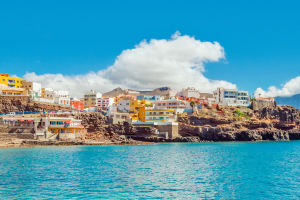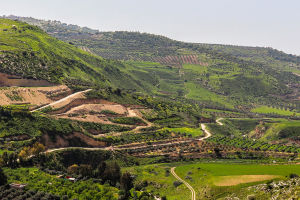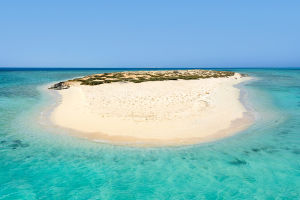The Lions Gate Bridge, an iconic suspension bridge in Vancouver, Canada, spans the Burrard Inlet, connecting the bustling city with the serene landscapes of North and West Vancouver.
This majestic bridge is more than just a passageway; it's a historic and architectural marvel that has captivated the world for nearly a century.
Its unique blend of history, engineering, and cultural significance makes the Lions Gate Bridge a truly remarkable structure.
Lions Gate Bridge
Origins of a Dream
The story of the Lions Gate Bridge begins in the early 20th century, during Vancouver's period of rapid growth. By the 1920s, Vancouverites recognized the need for a bridge that would link the city with the northern regions. However, it wasn't until the Guinness family, proposed financing the project in the 1930s that the dream began to materialize. This unusual investment was driven by a vision to develop West Vancouver's natural beauty and accessibility, transforming it from a quiet area into a sought-after residential zone.
After lengthy debates, public opposition, and government negotiations, construction finally began in 1937. The bridge would be named "Lions Gate" after the twin mountain peaks, known as "The Lions," which overlook the North Shore. The bridge's name was a nod to the area's natural surroundings and a testament to Vancouver's mountainous landscape.
Engineering Feats and Challenges
Constructing the Lions Gate Bridge posed significant engineering challenges, especially considering the technology of the time. The bridge stretches an impressive 1,517 meters (4,978 feet), and it was one of the longest suspension bridges in the world at the time of its completion. Engineers had to account for the strong currents of the Burrard Inlet, unpredictable weather conditions, and the seismic activity typical of the region. Despite these obstacles, the bridge was completed in a remarkable 19 months and officially opened on November 14, 1938.
The bridge's design was revolutionary for its era. It uses a series of tall steel towers, massive steel cables, and intricate truss work to support the roadway. To reduce the bridge's weight, engineers utilized lightweight steel for much of the structure. One of the bridge's defining characteristics is its elegant Art Deco design, which was a popular architectural style in the 1930s. The streamlined, modern look of the bridge, combined with its structural ingenuity, made it an instant landmark.
The Iconic Lions and Their Legacy
The Lions Gate Bridge is not only a functional piece of infrastructure but also a cultural symbol. The bridge's two distinctive lions, located at the southern end, represent the mythical lions of Vancouver's Coast Mountains. Over the years, these lions have become symbolic guardians, watching over the bridge and all who cross it. They serve as a reminder of Vancouver's rich natural heritage and the enduring spirit of its people.
During the early 1940s, the bridge was briefly closed to civilian traffic and used primarily for essential strategic purposes. This period contributed to the bridge's reputation as a symbol of strength and resilience. Following these events, the bridge resumed its role as a primary gateway to North and West Vancouver, helping fuel the region's expansion and economic growth.
Renovations and Modern Upgrades
By the 1990s, the Lions Gate Bridge required significant upgrades to meet the demands of modern traffic and safety standards. In 2001, a massive renovation project began, aiming to restore the bridge's structural integrity while preserving its historical design. This $100-million project included replacing the entire deck, reinforcing the towers, and improving the suspension system. Remarkably, the bridge remained open throughout much of the renovation, demonstrating the engineers' dedication to minimizing disruption to the public.
Today, the Lions Gate Bridge is fully equipped with modern safety features while retaining its original Art Deco aesthetic. The renovation project was praised for striking a balance between modern engineering requirements and historical preservation, allowing the bridge to continue serving as a vital part of Vancouver's infrastructure while honoring its architectural legacy.
A Landmark of Vancouver
The Lions Gate Bridge has become a beloved landmark, attracting millions of visitors annually. Whether viewed from Stanley Park or the shores of North Vancouver, the bridge is a stunning sight, especially when illuminated at night. Its combination of historical significance, engineering brilliance, and breathtaking beauty has solidified the Lions Gate Bridge's status as one of Vancouver's most recognizable structures.
In popular culture, the Lions Gate Bridge has also left its mark. It has been featured in numerous films, television shows, and photographs, serving as a symbol of Vancouver's identity and connection to the world. The bridge's influence extends beyond Canada, as it stands among the world's most celebrated suspension bridges.
A Testament to Vision and Ingenuity
The Lions Gate Bridge stands as a testament to human vision, engineering prowess, and the enduring beauty of Vancouver's natural environment. It bridges not only the Burrard Inlet but also the past and present, serving as a symbol of progress and resilience. For locals and visitors alike, crossing the Lions Gate Bridge is more than just a commute; it's a journey through history, innovation, and inspiration.


